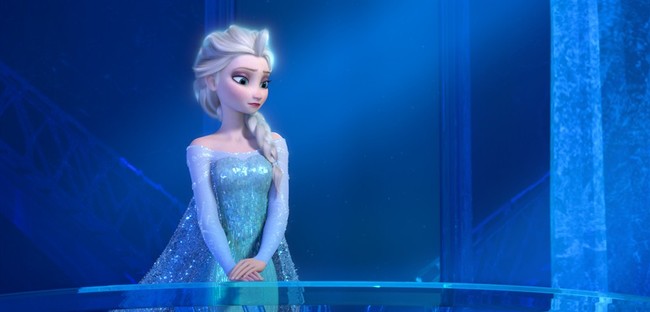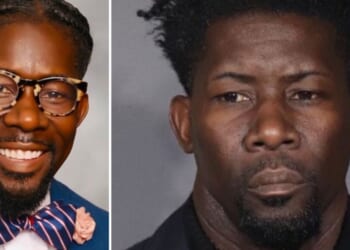
A young girl stands on a mountain of ice, her dress glittering like the northern lights. The world below has judged her, feared her, told her to hide what makes her different. Then comes the moment every parent remembers: she spreads her arms and sings, “No right, no wrong, no rules for me — I’m free.”
For a decade now, that line from Frozen has echoed in bedrooms and playgrounds, in sequined Elsa dresses and YouTube sing-alongs. It’s more than a song; it’s a creed. Every generation has a fairy tale that defines its moral world. For ours, it’s this one, a story in which isolation becomes empowerment, repression becomes villainy, and liberation means casting off every bond of duty or expectation.
There’s a reason the movie Frozen’s iconic song “Let It Go” hit like lightning. It gave girls permission to feel powerful, not weak. After centuries of tales where heroines obeyed, endured, or were saved, Elsa burst from the mold and claimed her own sovereignty. It felt fresh, defiant, modern. And yet, under the shimmer, the story carried a quiet inversion. Where older fairy tales taught that freedom comes through virtue, through courage, mercy, and love, Elsa’s anthem taught that freedom comes from rejecting virtue itself.
The transformation was moral, not musical. A generation earlier, Disney heroines longed to belong. Ariel gave up her voice for love, Belle sacrificed comfort for her father, Cinderella kept faith through humiliation. Elsa breaks the cycle by renouncing belonging. “Conceal, don’t feel” becomes “Feel, don’t kneel.” The dragon has been slain, but so has the idea of obedience.
For the little girls who sang it, this was thrilling. For the culture that raised them, it was revealing. The fairy tale had flipped: no longer a guide for how to master the self, but a hymn to self-sovereignty. And in that shift, an entire moral inheritance melted away.
Bruno Bettelheim and the Moral Architecture of the Mind
Nearly fifty years before Frozen, psychologist Bruno Bettelheim tried to explain why fairy tales mattered so much. In The Uses of Enchantment, he wrote that fairy stories are “indispensable to the child’s emotional and moral education” because they help the young mind face “the basic human predicaments.” A child, he said, lives surrounded by fear and impulse he can’t name. The fairy tale gives shape to that chaos — dragons for anger, witches for envy, forests for fear — and then offers the child a way through.
Bettelheim warned that when adults sanitize stories to spare children from darkness, they rob them of strength. “If we banish all struggle from a story,” he wrote, “we deprive the child of the chance to learn that inner conflicts can be mastered.” Evil must be visible so that good can be chosen. Without that choice, there is no moral growth, only emotional indulgence.
That’s why “Hansel and Gretel” still feels right and “Let It Go” does not. The old tale forces children to confront hunger, fear, abandonment, and the necessity to kill for survival, and still to find their way home. It ends with reconciliation and wisdom earned through ordeal. Elsa’s story ends with self-acceptance and no ordeal at all. The darkness is internalized, rebranded as misunderstood magic, and the lesson is not courage but comfort.
Bettelheim understood what most modern writers for children do not. Fairy tales are not decoration; they are training. They rehearse moral courage long before reason arrives. They teach that the world is perilous but ordered, that evil exists but can be overcome, that goodness is more than preference, but rather is a discipline of the soul.
When we trade that for self-validation, we don’t liberate children. We disarm them. We leave them without weapons or defenses in a world that is still full of wolves.
Fairy Tales Across Civilizations
Every civilization tells its children stories about who they are and what the world means. Those tales are not merely entertainment; they are moral maps. Through them, a people decides what virtues are rewarded, what vices are punished, and what kind of souls will inherit the earth.
Europe: Sin and Grace
In the Christian West, fairy tales taught that sin brings suffering and virtue brings redemption. “Cinderella” endures cruelty without bitterness and is rewarded for humility; “Jack and the Beanstalk” warns that courage without conscience becomes greed; “Puss in Boots” redeems cunning through loyalty; and Perrault’s “Diamonds and Toads,” perhaps my favorite fairy story, divides the diligent from the lazy with divine finality.
These were catechisms in disguise. They trained children to see moral order in a fallen world, and that goodness demands work, pride leads to ruin, and justice, though delayed, always arrives.
Russia: Endurance and Fate
Russian folktales are forged in snow and suffering for a people mostly divided between impoverished peasants and glittering, cruel nobles. Ivan the Fool triumphs not through strength or cleverness but by faith and patience. The villain is pride — the arrogance of believing you can outwit destiny. These stories prepared generations to endure tyranny and hardship without losing their souls.
Japan: Harmony and Duty
Japanese mukashibanashi prize obedience and balance. In “The Grateful Crane,” a man destroys his happiness by breaking a sacred rule. The lesson is simple: harmony is higher than self-will. The greatest sin is selfishness; the highest virtue, self-sacrifice.
China: Balance and Duty
Chinese tales echo Confucian order. In “The Cowherd and the Weaver Girl,” love must yield to responsibility; happiness cannot violate harmony. “Mulan” disguises herself as a man not to rebel, but to uphold filial duty. In “The Monkey King,” even the trickster hero must ultimately bow to heaven’s law. The rhythm is constant: fulfill your obligations first, then seek fulfillment. Every act must restore the balance between heaven and earth.
West Africa: Wit and Freedom
Anansi the Spider wins by wit against strength. Under oppression, cleverness became righteousness — survival itself became a form of justice. When these stories crossed the Atlantic, journalist Joel Chandler Harris gathered them as the Uncle Remus tales, preserving their wisdom for American children at a moment when the country itself was changing. Through Br’er Rabbit, young readers learned that intellect, cleverness, and humor could triumph where power could not.
Native America: Reverence and Balance
Coyote and Raven trick the world into existence, and every misstep brings famine or flood. The tales teach humility: man is not master of nature but a thread in its web. Right living means walking lightly.
Across all these traditions, the pattern holds: every culture teaches its children how to live, what to revere, and what to fear. Fairy tales are civilization’s first teachers, the quiet architects of collective character.
The German Thread: Old Stories, New Gods
But there is a darkness here as well. Because of the vast inheritance of fairy tales that had been told in Germany for centuries, the Nazis didn’t need to invent a new ideology. They only had to update the software that already ran beneath the surface of German consciousness. Centuries of folklore had done the groundwork, training generations to see moral order in tribal terms. The “good” peasant, the obedient daughter, the clever youth who outwits the greedy stranger — these were not just characters. They were templates for how a German child learned to understand virtue, danger, and belonging.
When Jacob and Wilhelm Grimm collected and published their Kinder- und Hausmärchen in the early 1800s, they believed they were preserving the Volksgeist, the spirit of the people. And they were. But in preserving it, they also preserved its shadows. Tales such as “The Jew in the Thornbush” and “The Good Bargain” portrayed Jewish figures as grasping and deceitful. Witches, goblins, and devils bore the same physical traits that popular caricature had long assigned to Jews: hooked noses, lust for gold, malicious cunning.
Children absorbed those patterns before they ever met a real Jewish person. Story by story, bedtime by bedtime, they learned what “evil” looked like, how it talked, how it moved. By the time Nazi ideology appeared, it fit perfectly into the moral architecture already built in the nation’s imagination from infancy. Goebbels and his propagandists didn’t need to teach Germans to hate; they just repurposed the existing stories, coloring them in with modern politics. Fairy tales became political catechisms.
This is the frightening truth. Storytelling is not decoration. It is programming. The symbols of childhood become the reflexes of adulthood. Myths set grooves in the collective mind that last for centuries, ready to be reactivated by any movement that speaks their language.
As Bruno Bettelheim later wrote, “Fairy tales carry important messages to the conscious, the preconscious, and the unconscious mind, on whatever level each is functioning at the time.” When the message is moral, the result is conscience. When the message is tribal, the result is fanaticism.
The Nazis proved that stories outlive their tellers. What a people sings to its children becomes the creed of its soldiers.
The American Thread: Founding Myths and the Moral Frontier
If Germany’s fairy tales were a mirror of blood and tribe, America’s earliest stories were hymns to freedom and providence. This was a nation with no ancient epics, no ancestral pantheon. Its myths had to be made from scratch, and they were made from men.
George Washington and the cherry tree. Benjamin Franklin with his kite in the storm. Paul Revere’s midnight ride, Johnny Appleseed’s endless orchard, Davy Crockett on the frontier. These weren’t fairy tales in form, but they functioned the same way. They told children what it meant to be American: brave, self-reliant, honest before God, and willing to risk everything for liberty.
These stories formed a civic religion, our national catechism of competence and courage. They taught that freedom was not license but duty, a gift from God that demanded character to preserve it. The American child learned that to tell the truth, work hard, and keep faith was to live inside the blessing of Providence itself.
The dragon was tyranny; the knight was the common man.
Then the tone changed. With Uncle Tom’s Cabin, Harriet Beecher Stowe turned the national story inward. The hero was no longer the conqueror of wilderness but the sufferer within civilization itself. Tom’s faith and forgiveness in the face of brutality mirrored the redemptive suffering once reserved for saints.
It worked. The novel became the most influential in American history, igniting empathy and outrage alike. But it marked a turning point. From then on, the American tale carried guilt in its bones. The myth of innocence had ended; the new moral lesson was not you can do anything but you must account for what you’ve done.
Our fiction began to oscillate between the self-made hero and the penitent reformer, one celebrating striving, the other warning of sin. Both currents shaped the American conscience, but they also fractured it. Where early myths built confidence, the new ones built self-doubt. And both would echo into the stories of later generations. While the national moral correction was necessary and just, it left behind scar tissue, a weakness that could be exploited by enemies both without and within.
The Modern Shift: From Virtue to Validation
Every nation’s stories grow up with its children. Ours began with moral certainty and frontier courage and slowly became something else. The shift started slowly and began in adult books, but by the late 20th century it emerged in children’s literature, changing the way our young looked at the world.
The Moral Generation: Duty and Deed
For Boomers and early Gen X, virtue was still active, not reflective. The Hardy Boys and Nancy Drew taught that bravery and persistence uncover truth. Wrongdoers were caught; justice restored. Tom Sawyer and Huckleberry Finn wrestled with conscience but never doubted right and wrong. These stories expected the child to act, to become good, not merely feel good.
The Introspective Generation: Feeling and Identity
By the 1970s and ’80s, the focus turned inward. Are You There God? It’s Me, Margaret, Bridge to Terabithia, and A Wrinkle in Time replaced moral trial with self-understanding. Evil became confusion; virtue became empathy. The hero’s quest became a therapy session.
The Therapeutic Generation: Validation as Virtue
For Gen Z, story has nearly completed its inversion. Heartstopper equates goodness with being seen. Smile turns struggle into emotional recovery. The Hunger Games blurs good and evil until trauma is the only truth. The Summer I Turned Pretty equates maturity with unashamed desire.
These books still use the framework of the old fairy tale — ordeal, revelation, triumph — but they’ve hollowed out the moral core. Where a 1950s story taught become good, a 2020s story teaches be yourself. The first builds citizens; the second builds consumers, or C.S. Lewis’s men without chests.
What the Change Means
Prosperity made us gentle. Safety made us sentimental. We wrote struggle out of our stories, replacing duty with therapy, sin with self-esteem. But the human soul still needs dragons to fight. When those vanish from our tales, they vanish from our children. They grow up fluent in emotion but illiterate in virtue — rich in compassion (at least for favored groups), perhaps, but unanchored.
Bettelheim warned that when stories stop confronting darkness, they leave children “ill-equipped to cope with the ambiguities of real life.” We have reached that point. The old fairy tales trained the conscience; the new ones sedate it. A civilization cannot survive on self-validation. It must teach its children how to be brave, not just how to be seen.
The Story’s Return
Stories are the oldest moral teachers in the world. Before there were schools or sermons, there were tales told by firelight, immortal lessons in courage, faith, and consequence. Every civilization understood this. But the modern West, in its comfort, has forgotten. We began to treat stories as frivolous decorations, and in doing so, we surrendered one of civilization’s most powerful tools for shaping the soul.
It’s not enough for children simply to read. They’ll absorb whatever stories we place before them, and those stories will shape their sense of truth more deeply than any lecture. The problem isn’t that today’s kids don’t have stories; it’s that they’re drowning in them: TikTok clips, webcomics, mobile games, YouTube channels, fanfiction threads. Storytelling hasn’t vanished; it’s multiplied and fragmented. The moral center, once anchored in faith and virtue, is dissolving in endless content.
Worse, the lessons have inverted. Fairy tales once told children that dragons can be slain. Now, many tell them the dragon can be your boyfriend, and that evil is just misunderstood. That danger is exciting, not because you conquer it, but because you surrender to it. What kind of lesson is that?
When we blur the line between monster and man, we don’t deepen empathy; we erode discernment. The old tales taught courage in the face of temptation. The new ones teach curiosity toward it, the trial replaced by the tryst. They train the young not to resist the darkness, but to romanticize it.
That’s why it’s not enough to tell children to read. We must know what they’re reading — and watching, and playing. Every book, show, or game carries a worldview inside it. To hand a child a story is to hand them a map of good and evil. We must be sure the map points toward light.
C.S. Lewis warned of this long before screens and algorithms. In The Abolition of Man, he called them “men without chests” — people whose intellect and appetite still function, but whose hearts have never been trained to love the good. Fairy tales once built that chest. They formed the moral imagination before the mind could reason, teaching children not only to think but to feel rightly. When we stopped telling such stories, we began producing clever, capable, emotionally fluent souls with no compass. They can feel everything but stand for nothing.
There are still good stories, great noble tales that teach virtue and sacrifice, faith and redemption. But they compete against a tide of affirmation disguised as art. So the burden falls to adults: parents, teachers, pastors, neighbors. We are the gatekeepers now. We decide which myths our children will carry into the world.
Bettelheim warned that “the child needs to believe that evil can be overcome by good.” That lesson still stands. A civilization that forgets it will soon find the dragon at its door — and no one left who remembers how to fight.
Editor’s Note: Help us keep bringing you great cultural content like this article. Help us expose the truth—sign up with promo code POTUS47 for 74% off your VIP membership.









